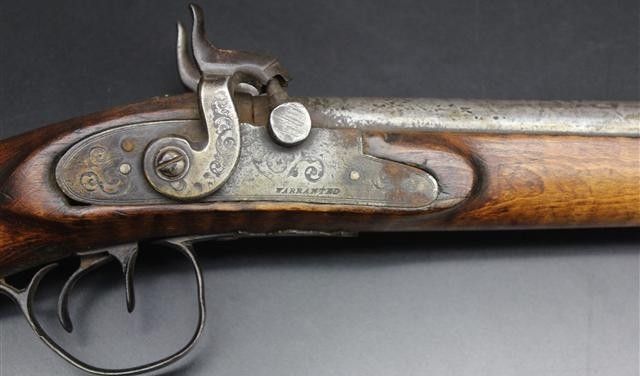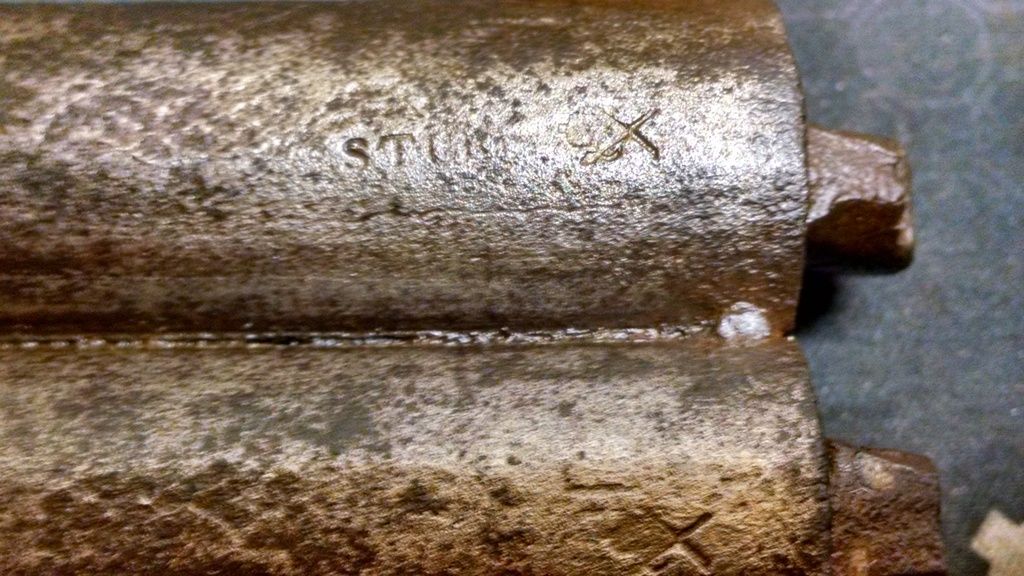-
Friends, our 2nd Amendment rights are always under attack and the NRA has been a constant for decades in helping fight that fight.
We have partnered with the NRA to offer you a discount on membership and Muzzleloading Forum gets a small percentage too of each membership, so you are supporting both the NRA and us.
Use this link to sign up please; https://membership.nra.org/recruiters/join/XR045103
You are using an out of date browser. It may not display this or other websites correctly.
You should upgrade or use an alternative browser.
You should upgrade or use an alternative browser.
Double Barrel .410 Muzzleloader
- Thread starter Chris237
- Start date

Help Support Muzzleloading Forum:
This site may earn a commission from merchant affiliate
links, including eBay, Amazon, and others.
FredBoulton
32 Cal.
- Joined
- May 24, 2012
- Messages
- 8
- Reaction score
- 0
It is not British---all of it. The Belgians were very fond of using British gun makers names and the word "London" on cheap guns intended for the US market.
The style is entirely US. Liege made wonderful guns, but it also produced a lot of manure---the same thing goes for Birmingham.
Fred
The style is entirely US. Liege made wonderful guns, but it also produced a lot of manure---the same thing goes for Birmingham.
Fred
Billnpatti
Cannon
- Joined
- Aug 11, 2008
- Messages
- 7,340
- Reaction score
- 44
Yeah! I like it. Based on your measurements of the bore, you could load .50 cal patched balls for deer or put shot in it for small game. You need to have it checked out and if it is still shootable, you ought to take it to the woods and let it harvest some game once again.
demonwolf444
Pilgrim
- Joined
- Nov 3, 2014
- Messages
- 3
- Reaction score
- 0
Smart gun there, seems like it was a flinter some time ago perhaps? or flinter side plates built as percussion.
It looks like an interesting piece; let us know your thoughts after you have assessed its condition and keep us updated with anything you hunt with it?
It looks like an interesting piece; let us know your thoughts after you have assessed its condition and keep us updated with anything you hunt with it?
I'm not sure why you suspect it was once a flintlock?
One of the first things to look at when the gun is suspected of having once been a flintlock is the stock wood, right under and behind the hammer.

Notice that on this gun, the wood totally covers the top edge (face) of the lockplate and all around it.
This tells me that the stock was never cut for a flintlocks use.
Most flintlocks have the wood under and behind the cock removed so the top surface of the lockplate is exposed in this area.
The inside surface (towards the barrel) of the cock above the lockplate usually projects inward so that it hangs over the lockplates upper surface.
The projection, which extends upward towards the flint jaws is removed in the area where the face of the lockplate exists. This stop serves as a "stop" for the falling cock.
Because the stop needs access to the top of the lockplate to make the cock stop falling when the gun fires, the wood in that area needs to be removed.
The length of the removed wood extends towards the rear of the lock so that it clears the cock at all times, from when the cock is fully cocked to when the cock rests in the fired position.
Yes, there were some flintlocks made with internal stops for the falling cock but most used the exposed top of the lockplate method.
One of the first things to look at when the gun is suspected of having once been a flintlock is the stock wood, right under and behind the hammer.

Notice that on this gun, the wood totally covers the top edge (face) of the lockplate and all around it.
This tells me that the stock was never cut for a flintlocks use.
Most flintlocks have the wood under and behind the cock removed so the top surface of the lockplate is exposed in this area.
The inside surface (towards the barrel) of the cock above the lockplate usually projects inward so that it hangs over the lockplates upper surface.
The projection, which extends upward towards the flint jaws is removed in the area where the face of the lockplate exists. This stop serves as a "stop" for the falling cock.
Because the stop needs access to the top of the lockplate to make the cock stop falling when the gun fires, the wood in that area needs to be removed.
The length of the removed wood extends towards the rear of the lock so that it clears the cock at all times, from when the cock is fully cocked to when the cock rests in the fired position.
Yes, there were some flintlocks made with internal stops for the falling cock but most used the exposed top of the lockplate method.
Good evening all. Well, I finally got the nerve up to pull the barrels out of the stock to look for additional markings. It appears that the word "STORY" is stamped under the barrel along with what appears to be an "X" with a crown above it on each barrel. I'm going to try to post some photos of it. Also, I was able to use a better digital caliber and the inside diameter at the bores is .526". I'm going to end up selling it (I hope) but really need to be able to confirm what it is so I can update my listing correctly.






robinghewitt
62 Cal.
- Joined
- Jun 26, 2004
- Messages
- 2,605
- Reaction score
- 22
Doesn't look like ELG but not quite right for crossed sceptres either :hmm:
It might be fun to scratch the solder.
As a general rule, assuming one or the other...
White = British
Yellow = Belgian
It might be fun to scratch the solder.
As a general rule, assuming one or the other...
White = British
Yellow = Belgian
You do need to update your G/B listing. It is neither a rifle or .32 caliber. It is a nice little double barrel shotgun though.
curator said:I suspect it is an American made gun using (maybe) British parts. Not a lot of British or European guns made with (curly maple stocks, deeply curved butt plates) and that style cheek-rest. The inlays in their profusion are typical 1840-1870 Eastern Great Lakes area (Western New York, Ohio, Indiana etc.) Could have been a re-stocking job by a local gunsmith in that period.
The curve of the buttplate is interesting. Asa Story and two sons worked in Windsor Vermont for nearly 50 years. It falls into the timeframe. Just a suggestion. The word " STORY" just reminded me of the gunmaker.
robinghewitt
62 Cal.
- Joined
- Jun 26, 2004
- Messages
- 2,605
- Reaction score
- 22
Perhaps it says, "STUBBS". Unusual place to say anything apart from the bore size :hmm:
- Joined
- Aug 6, 2005
- Messages
- 7,070
- Reaction score
- 5,362
Or just the word 'STUB' as in stub-welded. So-called "single iron stub damascus" was used for the cheapest damascus barrels. In this type, a single twisted rod is flattened into a ribbon which is twisted around in a spiral form into one barrel. Two separate single barrels were made this way and welded together to make a double barreled gun. The raw materials used to make this rod came from old horse-shoe nails, broken files and coach springs.
Just a thought in passing - can't let you all think that I'm quite dead yet.
tac
Just a thought in passing - can't let you all think that I'm quite dead yet.
tac
I'd call it a small bore English double barrel bird gun. Give the bore diameter and all found markings.
robinghewitt
62 Cal.
- Joined
- Jun 26, 2004
- Messages
- 2,605
- Reaction score
- 22
But those bits sticking out the side to hold the nipples are totally un-English :idunno:
- Joined
- Aug 6, 2005
- Messages
- 7,070
- Reaction score
- 5,362
Squire Robin said:But those bits sticking out the side to hold the nipples are totally un-English :idunno:
Yup.
tac
As I said before, I don't think this particular gun was ever a flintlock.
The barrels may have come off of a flintlock and the percussion drums added but the wood on the stock doesn't indicate flintlock locks were ever used on it.
The barrels may have come off of a flintlock and the percussion drums added but the wood on the stock doesn't indicate flintlock locks were ever used on it.
Similar threads
- Replies
- 1
- Views
- 528
- Replies
- 2
- Views
- 280
- Replies
- 2
- Views
- 624
- Locked
- Replies
- 13
- Views
- 2K



